10 Versatile Pickleball Hitting Techniques For You (Dominate The Court!)
( If you purchase through our sponsored links, we may receive a small commission at no extra cost to you )
Why Do You Need Techniques?
How many pickleball hitting techniques you apply in your game?
If you are a novice you don’t have much of those under your belt. But, being a pro player you know a great deal. To beat the opponent you must have as much as hitting techniques in your arsenal.
The beginners to pro should know how to maneuver dink, volley, lob, smash, third shot, etc. To make a statement in the middle it is imperative to keep you abreast of the said skills.
Improvement of various techniques will certainly make the winning chance a bit higher for the advanced players.

Mastering Pickleball Hitting Techniques
In terms of your overall pickleball arsenal, the experts are truly skillful and competent enough. To improve the accuracy both the beginners and pros should work hard in their drills and practice sessions.
If you serve hard that will bring nothing for you. In return, the opponent will hit back to you. Rather, focus on adapting techniques with your movement and paddles.
Pro players love to embrace innovative methods whereas the recreational players pay effort for adopting new tricks to exercise more. Hence, this sport is not only great for health conscious people but also make them sporty.
Let’s break it down!
1. Pickleball Singles Strategy
Singles play is much more demanding physically. You need to have a good physical condition. Because there is no partner for you to help to cover the court.
To ensure depth of strokes the singles paddles may be a little heavier, a bit longer and have more pop. Check my review on selected Selkirk paddles to make your choice.
You are alone in the middle facing your opponent. So, always vigilant to move forward, backward and sideways. Show your elegance, guts and overall confidence.
The three important techniques to consider in singles are:
Deep serve:
Well executed deep serve to opponent’s weak side and get yourself into ready position after that. Swing the paddle from low to high and clearing the net with topspin.
Deep return:
Try to perform a deep return hoping for a floater from the opponent.
Come to the net:
If you can perform a solid deep return, you can come to the net. Go to the middle to cut down the opponent’s angle options.
check out a video tutorial.
2. Pickleball Doubles Strategy
You need more enjoyment and dynamism in your game. Play with your partner in doubles pickleball.
Competitive and vibrant gameplay is about to begin.
Sync with your partner properly and communicate with him to outperform the opponent duo. Start with a deep serve considering their weaknesses. After return, try to test their forehand and backhands.
Target a deep middle shot to keep the game’s energy up. Always try to communicate with your partner and figure out the rival’s weaknesses. The opponent’s paddle holding grip and launching movement indicate their style of playing.
Each player is on their toes both physically and psychologically. The top-rated players can analyze the opponent’s skill and next move critically and proactively.
Think prompt and keep moving!
Learn more from this video.
3. Groundstroke- Forehand & Backhand
You are at the midcourt position and trying to return the ball to the deep in the square. Then groundstroke will be the right option to hit in. Your dominant hand comes in to play the groundstroke. That is called the forehand groundstroke.
Get your body transitioning into the court. When you’re hitting a forehand, square up your feet and they get kind of underneath each other. You are moving forward towards the net.
Step on your back foot and then step into your left foot before you make contact with the ball. You want the ball in front of your hip if possible before making the contact.
For a backhand usage of shoulder plays a significant role. The transfer of balance between your feet makes the motion right for you to go for a perfect backhand groundstroke.
Must watch the video.
4. Volley
Stay down and let the ball come to you!
A volley is a shot hit in the air before the ball bounces. Get the crossover step and hit the ball with a gentle push.
A player can perform this shot from behind the non-volley zone. Sometimes the flight of ball allows you to put more force on the ball. This is an offensive volley. You can also execute a defensive volley below the height of the net.
5. Dink

Dink is a soft kind of shot that just goes over the net and lands in the non-volley zone or the kitchen. The arms and legs will assist you in this motion in making backhand and forehand shots. Always come back to the ready position in between.
You have two options. You can hit across to the opponent directly, or you can hit cross-court or diagonal. The diagonal shot has two big advantages.
You hit shorter balls so that your opponent doesn’t smash it back at you. This is the first advantage.
Another advantage is to have a greater margin of error on height. The ball lands in the non-volley zone so your opponent can’t smash it back at you.
6. Lob
Sometimes it’s a wise choice to get the ball up and over their heads to get them scrambling from the baseline. It’s really an effective shot particularly against short people and people who don’t have killer overheads.
Out of two types, the regular lob takes less effort. The paddle goes up under the ball to a high position. It just guides the ball over your opponent’s head.
The topspin lob is a more advanced technique of brushing the ball in tucking your elbow. It helps you to get added power and an added spin just to get over their heads and drop and spin out.
A video can teach you more.
7. Ready Position
Dynamic, not motionless at all.
That’s what a ready position actually refers to. From this position, you can easily and quickly move in any direction.
Ready position of your body
Ready position wants you to put your feet approximately a little more than shoulder-width apart whatever is comfortable for you.
Bend your knees and lift up your heels. By doing these your weight will shift forward. Then you’re ready to play from this point. It’s basically getting down and ready just like a goalie in soccer.
Ready position of your paddle
12 o’clock position
It’s where the paddle is directly up in front of you. Left-handed or right-handed both players are standing at 12 o’clock position. The benefit of this 12 o’clock position is that it lets you go to the forehand side or the backhand side equally.
2 or 10 o’clock position
For a right-handed player, it would be 10 o’clock position. The left-handed player stands at 2 o’clock position. It presents the back inside of the paddle whether you are right-handed or a left-handed. It helps you to defend a lot more surface area.
Don’t miss the video.
8. Hitting
Try to figure out the weak side of your opponent. Target that side and knock there again and again. Early identification of weakness makes the game easy for you.
Accustomed yourself with soft hand play in the singles. In the doubles, try to focus on the gap in the court created by your opponent. Hit the serves firm and deep in the middle.
Before hitting have a quick look at the feet movement of your opponent. A blend of an ample amount of paddle-generated spin makes your opponent confused and harder to return.
9. Serve To Win
Serving in pickleball is very simple and easy. In serving you should worry about the strategy that you are going to follow
Two things to keep in mind at the time of serve:
Serve as deep as possible. In pickleball whoever controls the net, controls the pace of the game. Serve deep so that the opponent doesn’t get the chance to come to the net.
Who has the advantage? Certainly, the people on the net.
Ingrain a pre serve routine in your subconscious mind. Take a moment to get ready. It may be a double bounce and get yourself set. The set part is telling your subconscious that you are ready to go.
Serve to win video.
10. Return
Return of serve. It is definitely a significant skill to master. Unforced error, any fault committed in return of serve, is unfortunate to happen.
The returns should be aimed at the very deep in the corners so that your rival faces the risk of missing those. In this context, I recommend a few beginner paddles with a widebody sweet spot and I am sure you will like it.
In a singles game, you have a lot of space to put your ball in. So, try to find out the gaps in your rival’s end. The doubles game has a centerline that splits two players’ space. That’s the negative space and you should aim this gap.
A Titbit From Facebook
Pickleball Forum, a social group of Facebook, includes a bunch of enthusiasts who are constantly posting pickleball related issues.
If you look around this forum, you will find a lot of new techniques people are adapting, analyzing and trying. Some are giving solutions to your hitting problems, suggesting a new shot, new strategy etc.
Be a member of this, you won’t be a loser for sure!
Conclusion:
Hold your paddle tight, put on your favorite shoe and let the ball get in.
The way you play soft volley, delicate touch shot on the net, showing so much of maneuverability truly mesmerizes me.
So much to know about the techniques of pickleball and the way you learn these. The players can meet their quench by watching YouTube videos, joining different forums. A range of books for pickleball is available to meet the demand.
These pickleball hitting techniques will not let you down. You are now ready to make the thing hard for your opponent.
Get yourself in ready position all the time, judge the ball correctly, hit the ball with right placement and confidence.
Let’s jump right in!

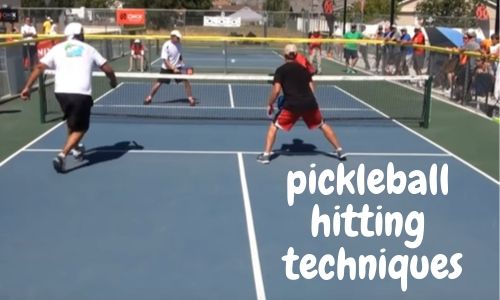
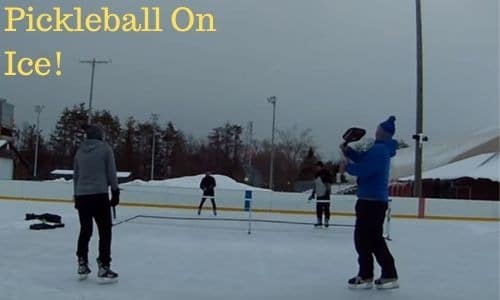
![Best Pickleball Equipment [6 Items Including Paddles & Balls]](https://sportstotry.com/wp-content/uploads/2022/03/pickleball-equipment.jpg)

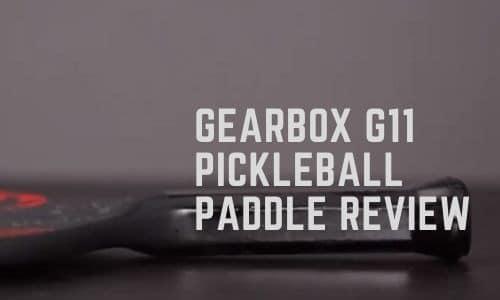
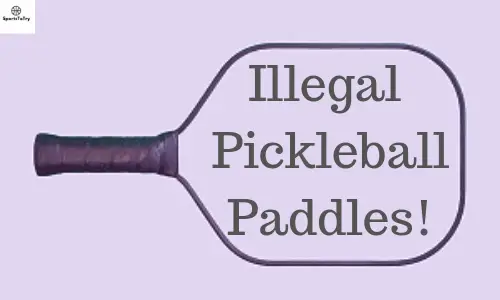
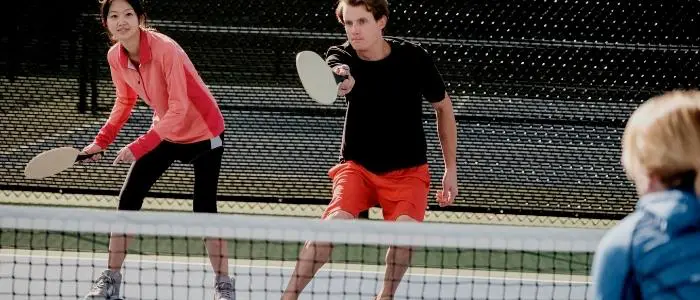
7 Comments